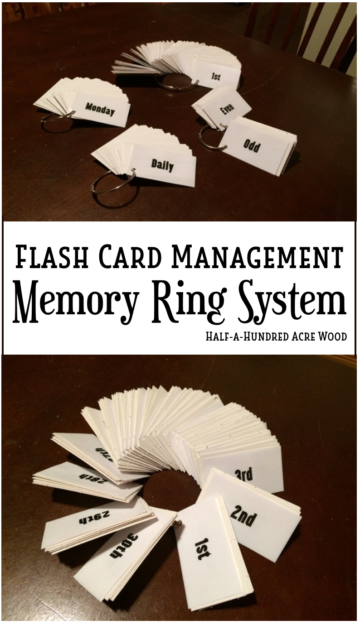
As we develop the discipline of memory/recall, our family has discovered the value in using a systematic way of cycling through our memory work, whether we’re memorizing scripture, vocabulary, speeches, poetry, facts, or passages of literature. Our Memory Work Review Schedules were designed with the basic idea behind the Scripture Memory System, but because I had custom-made the schedule to fit into a certain time period, it was not an efficient way to handle the memorization of certain things such as Latin vocabulary. No matter which Latin curriculum you use, you’ll memorize hundreds of words, which leads a student (or his mom) to a state of overwhelm as he attempts to manage 400+ index cards in an index card box. And… for us, reviewing 400+ vocabulary words without a systematic way to manage it resulted in one thing: dropping the vocabulary review.
This year we happened to merge the idea behind the Scripture Memory System and our favorite way of organizing flashcards: book rings. Here’s what we ended up with:
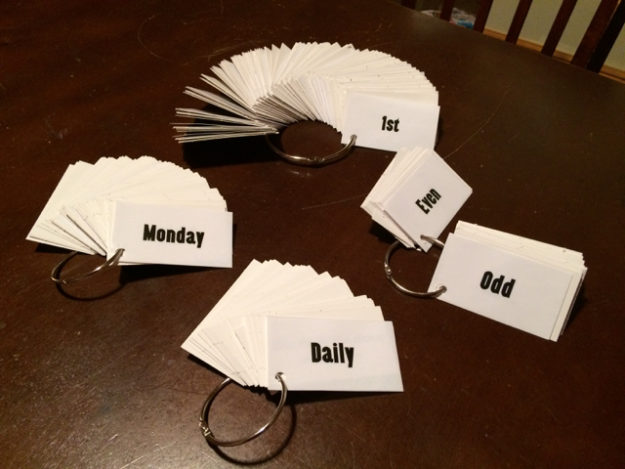
It has worked marvelously for us this year, so we wanted to share it in case others are having the same struggle!
The idea is to organize flashcards so that you are reviewing new material on a daily basis, fairly new material on odd/even days, older material on a weekly basis, and the oldest material (the information you’ve already mastered) once per month.
Supplies Needed:
- Index cards, a hole punch, and book rings in the size of your choice or…
- Blank White Flash Cards – 5 Rings, 1000 Index Cards, 2×3″ or Blank Color Flash Cards – 5 Rings, 1000 Index Cards, 2×3″
- Loose Leaf Ring Extra Large Book Ring (for the monthly 1st-31st flashcard collection)
- 3 or more book rings in another size (preferably 2″) (for the daily, odd/even, and weekly flashcard collections)
- Memory Ring System Cards – Printed on cardstock (or handwrite them if you’re using index cards)
If handwriting the Memory Ring System Cards, you’ll need a total of 39 cards labeled as follows:
- Daily
- Odd
- Even
- Monday
- Tuesday
- Wednesday
- Thursday
- Friday
- 1st, 2nd, 3rd, …, 29th, 30th, 31st
Organize these cards as follows:
- Place the Daily card on a ring.
- Place the Even and Odd cards on a ring.
- Place the Monday through Friday cards on a ring.
- Place the 1st through 31st cards on a ring.
Now we’re ready to start using the memory rings. For this example, we’ll assume our student has been introduced to five new Latin words: amo, laboro, laudo, oro, and voco. The student will make flashcards for each of these words and place it on the Daily ring. He will review these words daily until he is able to recite them automatically.

Let’s say after one week, he easily recites amo, laboro, oro, and voco. These four cards would move to the Even and Odd ring. He would split them up evenly and place half of these words behind Even and half behind Odd.

As students are introduced to new words, they will continue placing the new vocabulary behind the Daily Ring until they easily recite the new words, at which time they will move them to the Even/Odd Ring. Students will review only the cards according to the date. If today is Tuesday, March 12, the student (at this point) will review the vocabulary on the Daily Ring along with the vocabulary behind the Even Ring, since 12 is an even number.
When students feel that they can easily recite vocabulary behind the Even/Odd ring, they will move the words they’ve mastered to the Weekly Ring, splitting them up evenly between Monday, Tuesday, Wednesday, Thursday, and Friday.
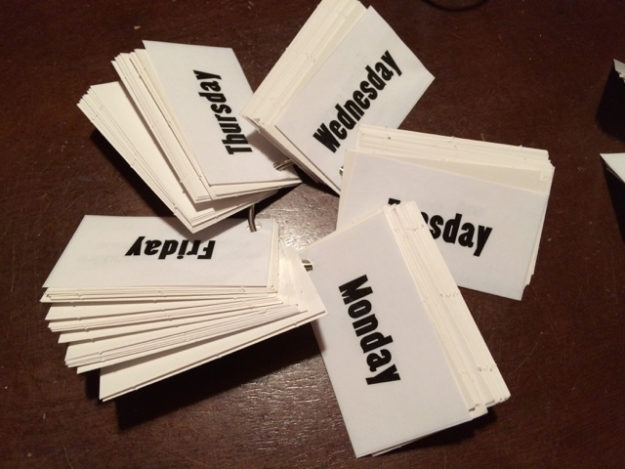
Now that there are flashcards behind the weekly Monday through Friday cards, if the date is Tuesday, March 12, the student will review the cards on the Daily Ring, the cards that are behind Even, and the cards behind Tuesday. If the student has no problem reciting the vocabulary on the weekly ring, he then moves the vocabulary he has mastered to the 1st through 31st cards so that he will continue to review it once per month.
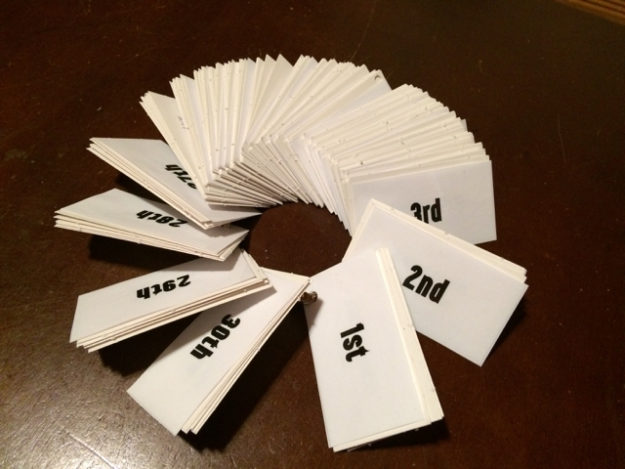
On Tuesday, March 12, the student would review the cards on the Daily Ring, the cards behind Even on the Even/Odd Ring, the cards behind Tuesday on the weekly ring, and the cards behind 12th on the monthly ring. This significantly reduces the overall amount of time needed for vocabulary review but also keeps the words in a systematic cycle of review to ensure it’s not forgotten. (Our oldest son has over 400 cards he’s reviewing, and it normally takes about 10 minutes per day, even on Mondays when he’s reviewing the cards from the two monthly days he missed over the weekend.)
If at any point the student is unable to recall what a word means, he will move it back to the previous ring to review it more often. Any time a student misses a day of the month (e.g., he doesn’t work on Latin review over the weekend), he will add those days of the month to his next vocabulary review.
If your student is deep into Latin and already has hundreds of cards to manage, take a week or two to review all the cards, placing them on the ring that he feels is appropriate based on his mastery of the vocabulary.
Other subjects work in much the same way. If you’re memorizing scripture, write the scripture on a card and place it on the Daily Ring. After it is mastered, move it to the Even/Odd Ring to practice it every other day. You’ll continue with the same process.
This systematic method of review works for memorizing:
- Scripture
- Vocabulary
- Latin or other foreign language
- Math, science, English grammar, and/or history facts
- Hymns and/or poetry
- Famous speeches or quotes
- Passages from literature
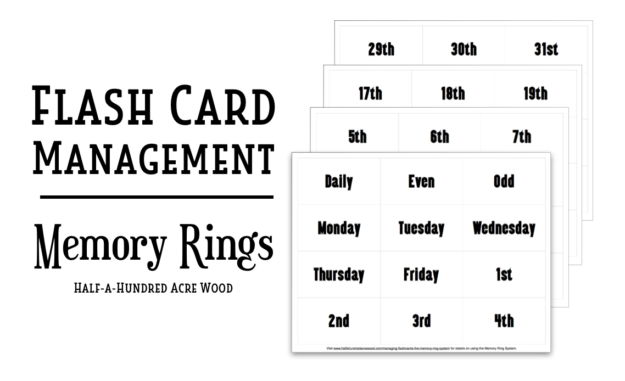
You can download our formatted Memory Ring System Cards for use with 2×3″ cards. Let us know if you have any questions!
